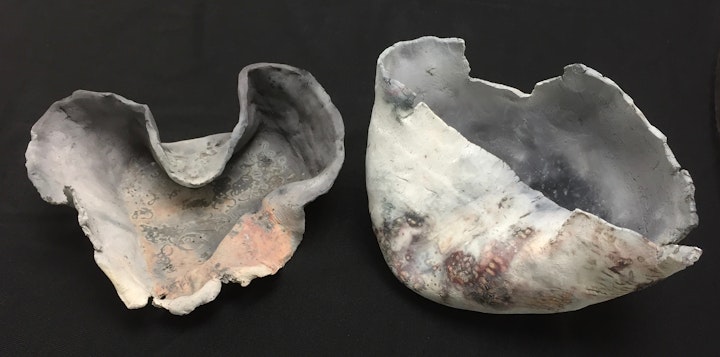
anguish (2016)
earthenware, 20cm x 15cm
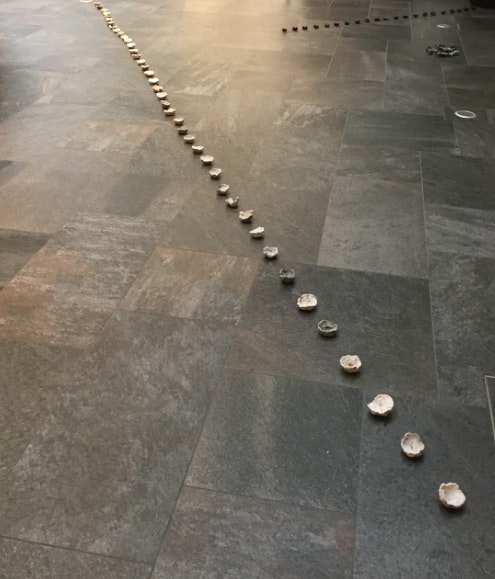
continuum I (2016)
porcelain with Iron Age sherds, 7.50m x 20cm overall
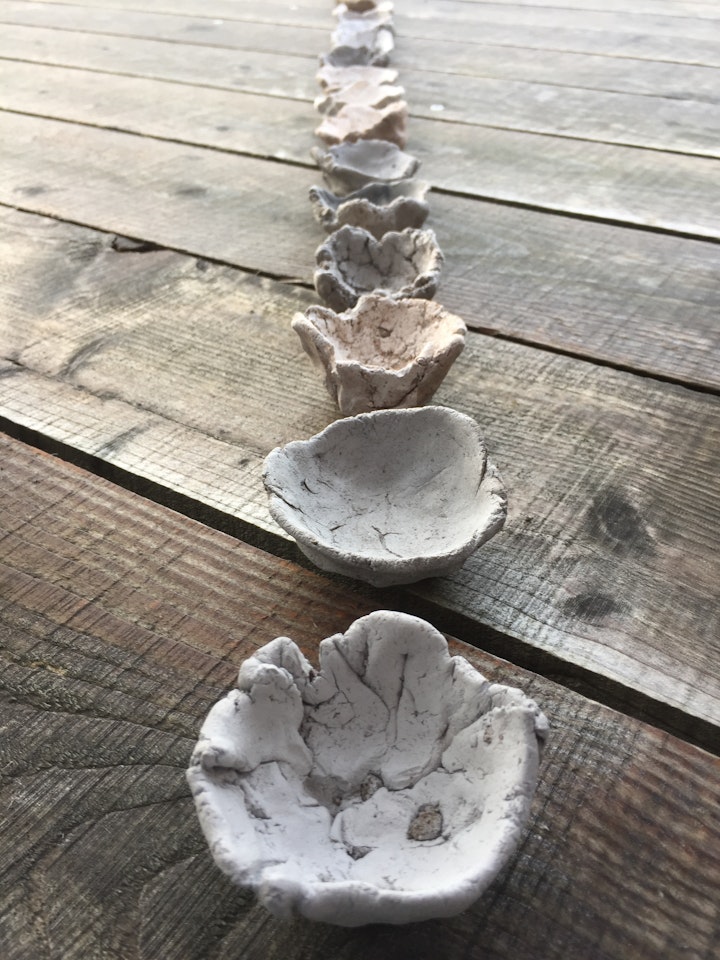
continuum I (2016) (detail)
porcelain with Iron Age sherds, 7.50m x 20cm overall

continuum II (2016)
porcelain, 4m x 20cm overall
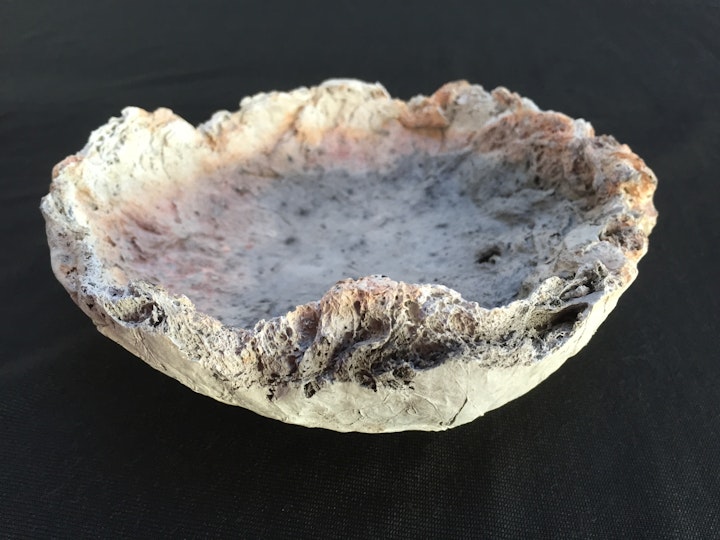
memento mori I (2016)
earthenware with wool, 20cm x 10cm
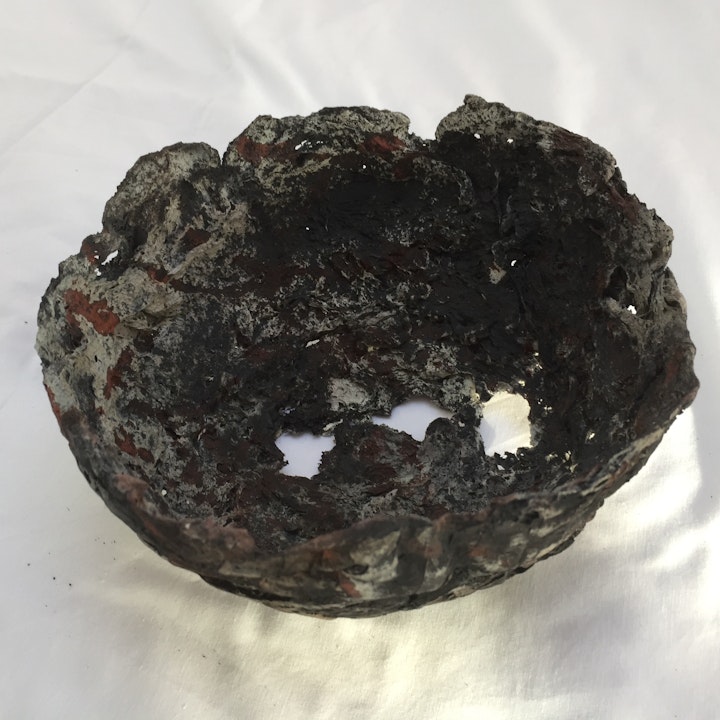
memento mori II (2017)
earthenware and porcelain with wool, 20cm x 20cm
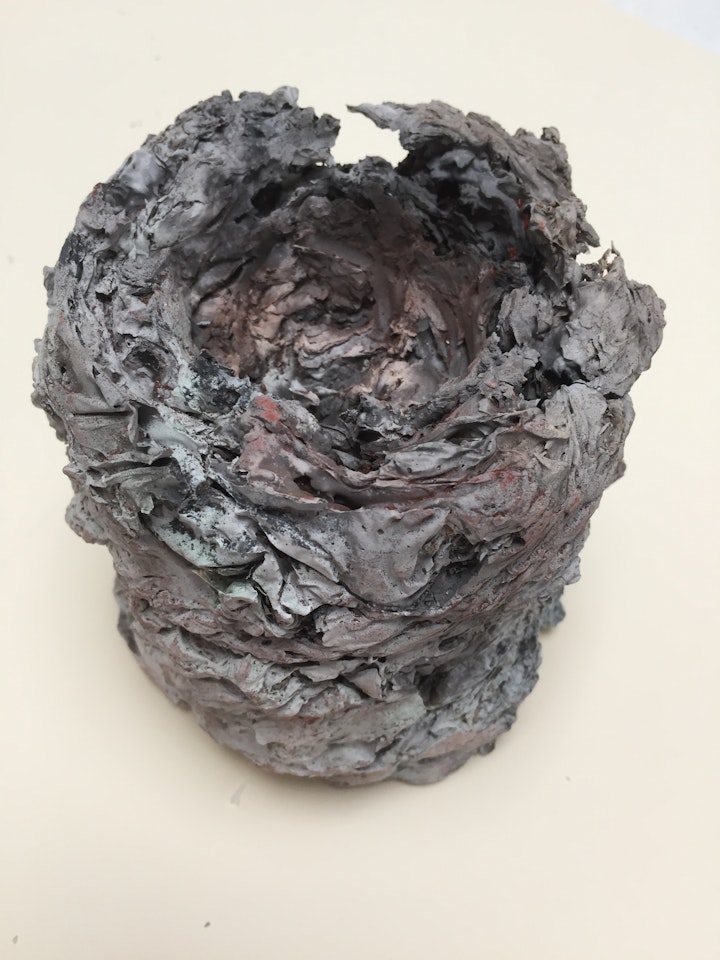
memento mori III (2017)
porcelain with Sea Lettuce, 20cm x 15cm

transformation I (2016)
porcelain, 50cm x 50cm
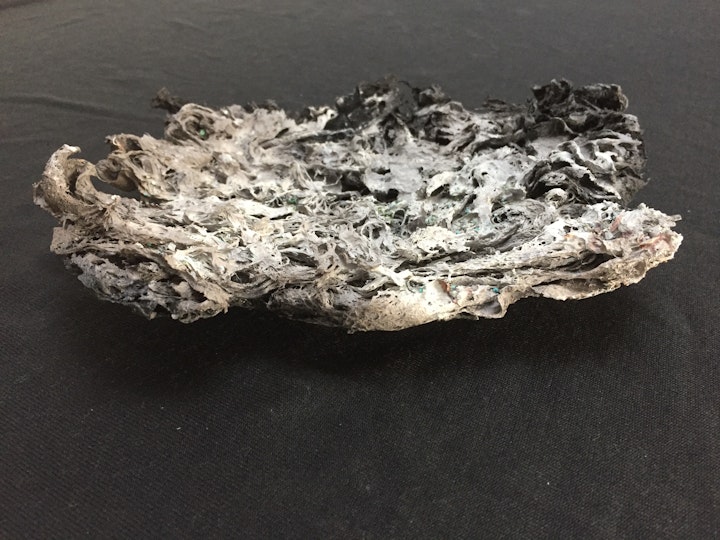
transformation II (2016)
porcelain with wool, 40cm x 8cm
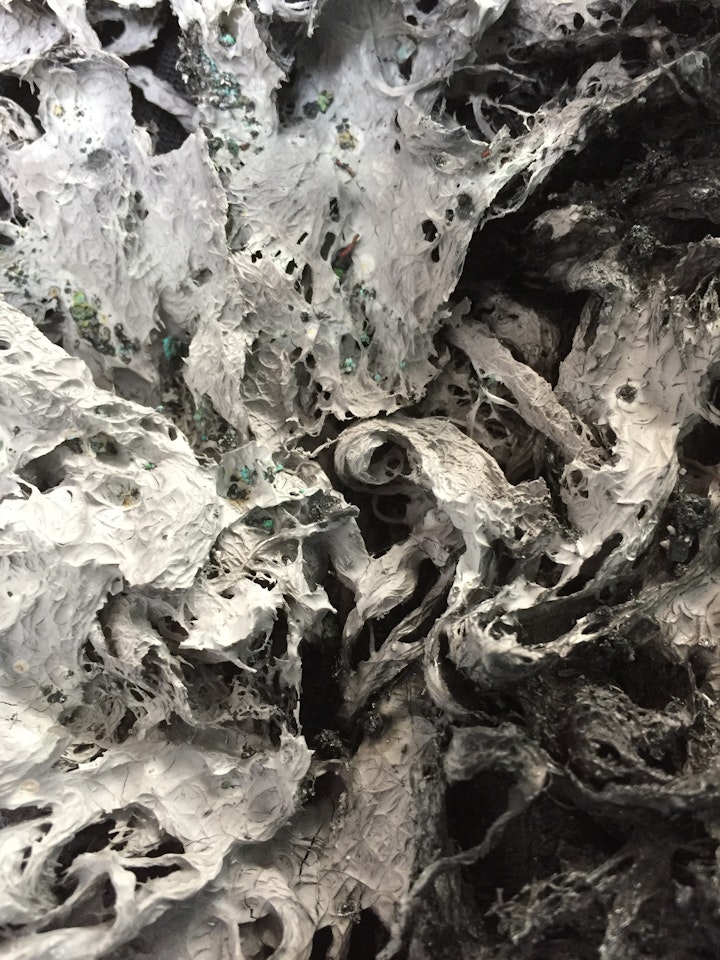
transformation II (2016) (detail)
Since Neolithic times, vessels have been made on Uist using local clay, and until very recently, clay was dug and stored to use for repairing fire bricks.
Using the earliest hand-building and pit-firing methods to combine and transform refined porcelain with humble, organic materials from Uist – wool, peat, moss, seaweed, heather - fragile containers encapsulate the secrets of this place in microcosm. These pieces can have a microscopic structure that emulates the friability of our bones in death or the seismic origins of our underlying land mass. Or they can form a linear continuum across the landscape, echoing ancient ard-marks or feannagan.
A sense of wonderment pervades the work - at the touch of early makers in the layered discoveries of pottery fragments, and at the tantalising prospect of what still remains to be found.